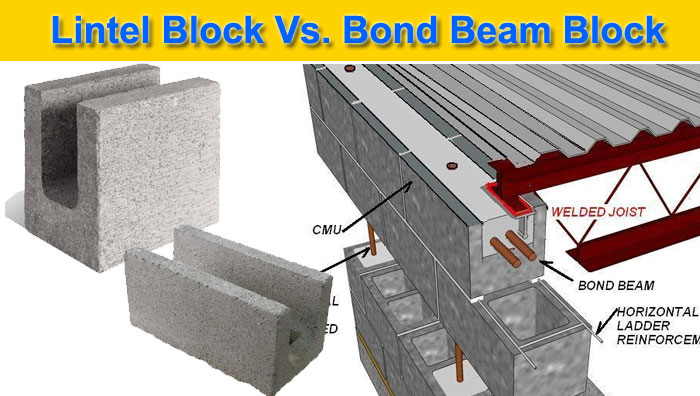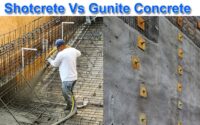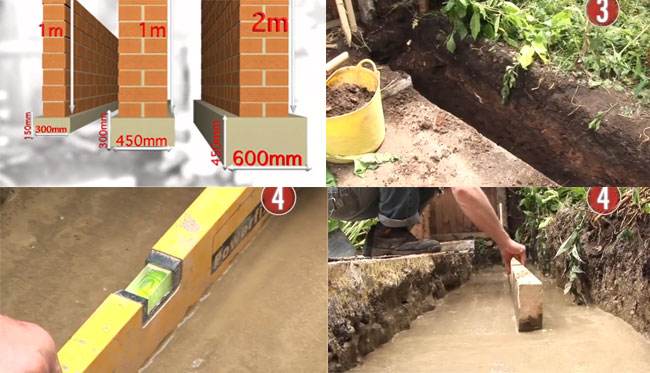Lintel Block Vs. Bond Beam Block | What is Bond Beam Block | What is Lintel Block
What Is a Lintel Block and What Does It Do?
The lintel block is a structural horizontal block that is installed between two vertical supports.
Lintels are now usually known as lintel blocks and are made of prestressed concrete.
The components that are packed together to make a suspended floor concrete slab are concrete lintel blocks.
Lintel blocks are horizontal masonry blocks in the shape of a U that are typically placed above apertures. The lintel beam is constructed by arranging lintel blocks in a specific pattern.
Lintel blocks are not suggested for bond beam construction since they do not allow for vertical and horizontal reinforcement to be combined.
The lintel block supports the piece of the wall that is above the opening between the two supports, and its curved space allows for cement grout and horizontal reinforcement.
The concrete lintel block serves the same purpose as the bond beam block and is the building’s main structural component.

Bond Beam Block vs. Lintel Block (Introduction):
A bond beam is a horizontal structural member installed above the brickwork to reinforce the wall.
What Is a Bond Beam, Exactly?
The horizontal concrete masonry units known as Bond beam blocks are horizontal concrete masonry units. The horizontal strength of the walls is provided by the bond beam.
The bond beams are the concrete that helps to connect the structure together horizontally in the case of steel reinforcement in grout.
The bond beam is usually at the top of a free-standing wall.
When horizontal reinforcement is needed, bond beam blocks are the finest multipurpose solution. They enable to create a stable horizontal beam construction.
Bond beam blocks are a type of block that is made up of special units and is specifically built to receive horizontal reinforcement.
The bond beam adds mass to the masonry walls, supporting both the point and the dispersed loads.
This device is commonly used to connect the horizontal cement range with the vertical masonry wall reinforcement.
Detail of the Bond Beam:
The bond beam’s reinforcement is employed to control cracks, and there must be a break between the bond beams and the control joints in the wall.
The area of steel required for the construction of bond beams for crack control should be bigger than the area necessary for joint reinforcing.
Masonry bond beams are frequently utilised around openings as well as at the top and bottom of walls.
Concrete Bond beams are typically employed in areas where the wall is not supported by the floors or roof structure.
Bond Beam Blocks’ Purpose:
Bond beam blocks are used to integrate horizontal and vertical reinforcement in reinforced masonry walls.
For crack management, bond beam reinforcement is utilised. Bond beam blocks are the horizontal elements of a wall that provide support to the construction.
The bond beam’s position is determined by the design of the building’s walls. Wherever there is an opening along the wall, bond beams are required.
When horizontal enforcement is necessary, the bond beams give a flexible solution.
When horizontal enforcement is necessary, bond beams are the best option. Bond beams serve to reinforce the wall and boost the lateral support bearing capacity.
The following are some of the benefits of bond beam blocks:
- Floor joists are supported and secured by bond beam blocks.
- Bond beam blocks are also utilised for additional wall support at the foundation and floor levels.
- On the doors and windows, the bond beam is also employed as a Lintel.
- Bond beam blocks are beneficial in seismically active areas.
Bond Beam Blocks Have a Few Drawbacks:
- The bond beam requires expert labour to construct.
- The bond beam is an expensive structure to create.
- There is a potential that the bond beams will have bonding issues with the masonry.
Lintel Blocks Vs. Bond Beam Blocks
| Lintel blocks | Bond Beam blocks |
| The lintel block is a structural horizontal block that is installed between two vertical supports. | These are the horizontal concrete masonry units. |
| Above doors, windows, and fireplaces, lintel blocks are widely utilised. | Bond beam blocks are beneficial in seismically active areas. |
| The Lintel beam is made up of Lintel blocks that are stacked in courses. | To build a bond beam, bond beam blocks are often put in courses in masonry walls. |
| The lintel blocks should only be used for walls that do not require any form of structural support and should not be utilised with vertical reinforcement. | The bond beam adds mass to the masonry walls, supporting both the point and the dispersed loads. |





